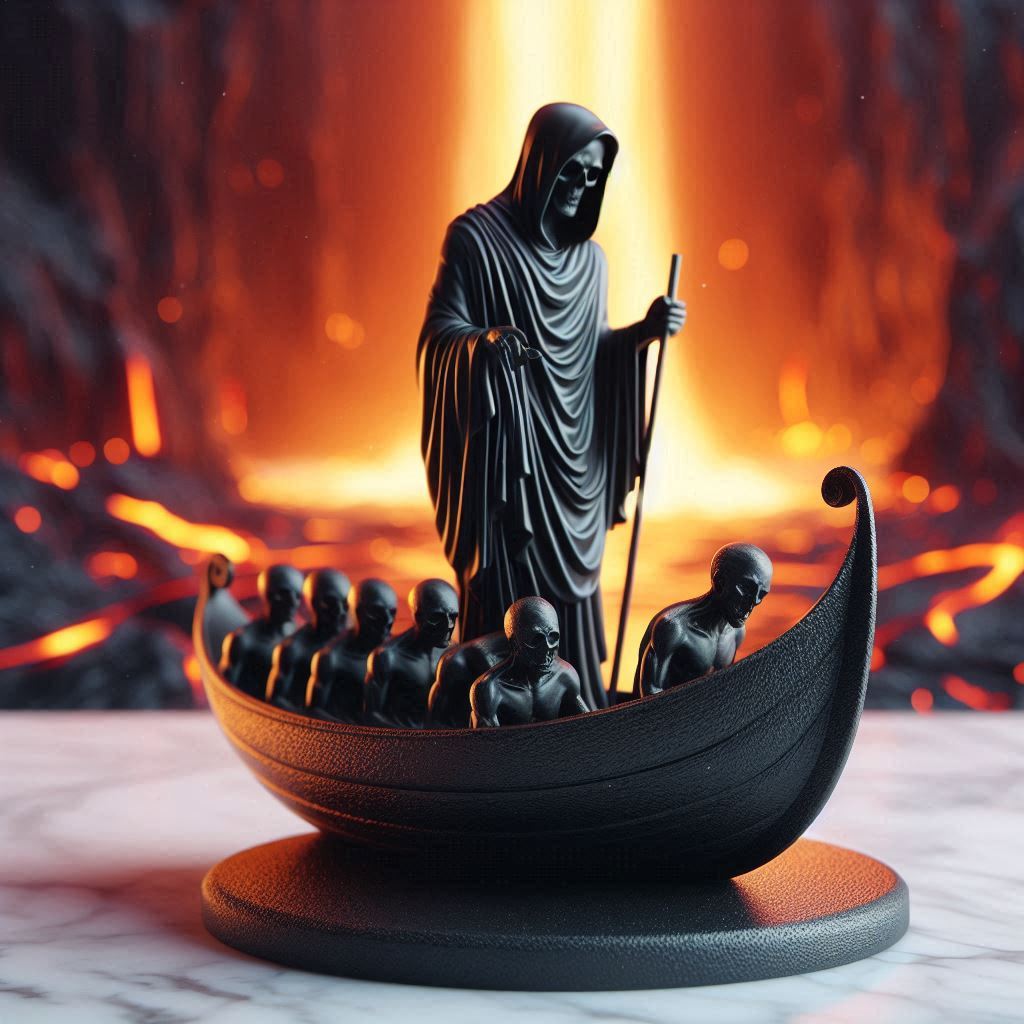Charon: The Ferryman of the Underworld
In the realm of Greek mythology, Charon serves as a pivotal figure guiding souls across the dark waters of the river Styx to the Underworld. Known for his stern demeanor and somber responsibilities, Charon represents the transition from life to death. His role is crucial in the ancient beliefs surrounding the afterlife, making him a compelling subject for exploration in the rich tapestry of Greek myths.
Table of Contents
- Who Is Charon?
- The Boat and the River Styx
- The Role of Charon in Greek Mythology
- Facts About Charon
- Charon in Culture and Art
- Conclusion
Who Is Charon?
Charon is the ancient Greek ferryman of the Underworld, responsible for transporting the souls of the deceased across the river Styx. He is often depicted as a grim and foreboding figure, shrouded in darkness and carrying a long pole to navigate his boat. Charon's stern demeanor reflects the gravity of his duty, as he guides souls to their final resting place, ensuring that they receive the proper passage to the afterlife.
The Boat and the River Styx
Charon's boat is a simple yet significant vessel, symbolizing the passage from life to death. The river Styx is depicted as dark and foreboding, often associated with the feelings of despair and finality that accompany death. Souls who wish to cross the Styx must pay Charon with an obol, a small coin placed in their mouths before burial. This payment was essential in ancient Greek culture, as it ensured safe passage to the other side.
Related Posts
Hades and Persephone: A Myth of Love, Power, and the Changing Seasons
The Punishments of Hades: Eternal Justice in the Underworld
The Role of Charon in Greek Mythology
Charon's role extends beyond mere transportation; he serves as a boundary between the living and the dead. His presence emphasizes the importance of proper burial rites in ancient Greece, as failure to provide for Charon could result in souls wandering the shores of the Styx for eternity. This belief underscores the significance of respecting the dead and honoring their memory within Greek culture.
Facts About Charon
- Parentage: Charon is often considered the son of Erebus (Darkness) and Nyx (Night).
- Appearance: He is typically depicted as an old man, cloaked in black, with a gaunt appearance and a solemn expression.
- Payment for Passage: Souls were required to pay Charon with an obol, which was traditionally placed in their mouths as they were buried.
- Role in the Underworld: Charon is one of the few figures allowed to travel between the land of the living and the Underworld, making him a unique character in Greek mythology.
- Cultural Depictions: Charon has been featured in various works of art, literature, and modern media, highlighting his enduring legacy in storytelling.
Charon in Culture and Art
Charon has been depicted in numerous artworks throughout history, including ancient pottery, paintings, and sculptures. His image serves as a reminder of mortality and the inevitable journey to the afterlife. In literature, Charon appears in works by authors such as Homer and Virgil, where he plays a crucial role in the narratives surrounding death and the afterlife. Modern interpretations of Charon can also be found in films, video games, and popular culture, reflecting the ongoing fascination with his character and the themes he embodies.
Conclusion
Charon, the ferryman of the Underworld, is a central figure in Greek mythology, symbolizing the inevitable transition from life to death. His solemn duty of guiding souls across the river Styx highlights the importance of honoring the dead and respecting the customs surrounding burial practices. Through his enduring legacy in art and culture, Charon continues to capture the imagination, reminding us of the universal themes of mortality and the mysteries of the afterlife.


